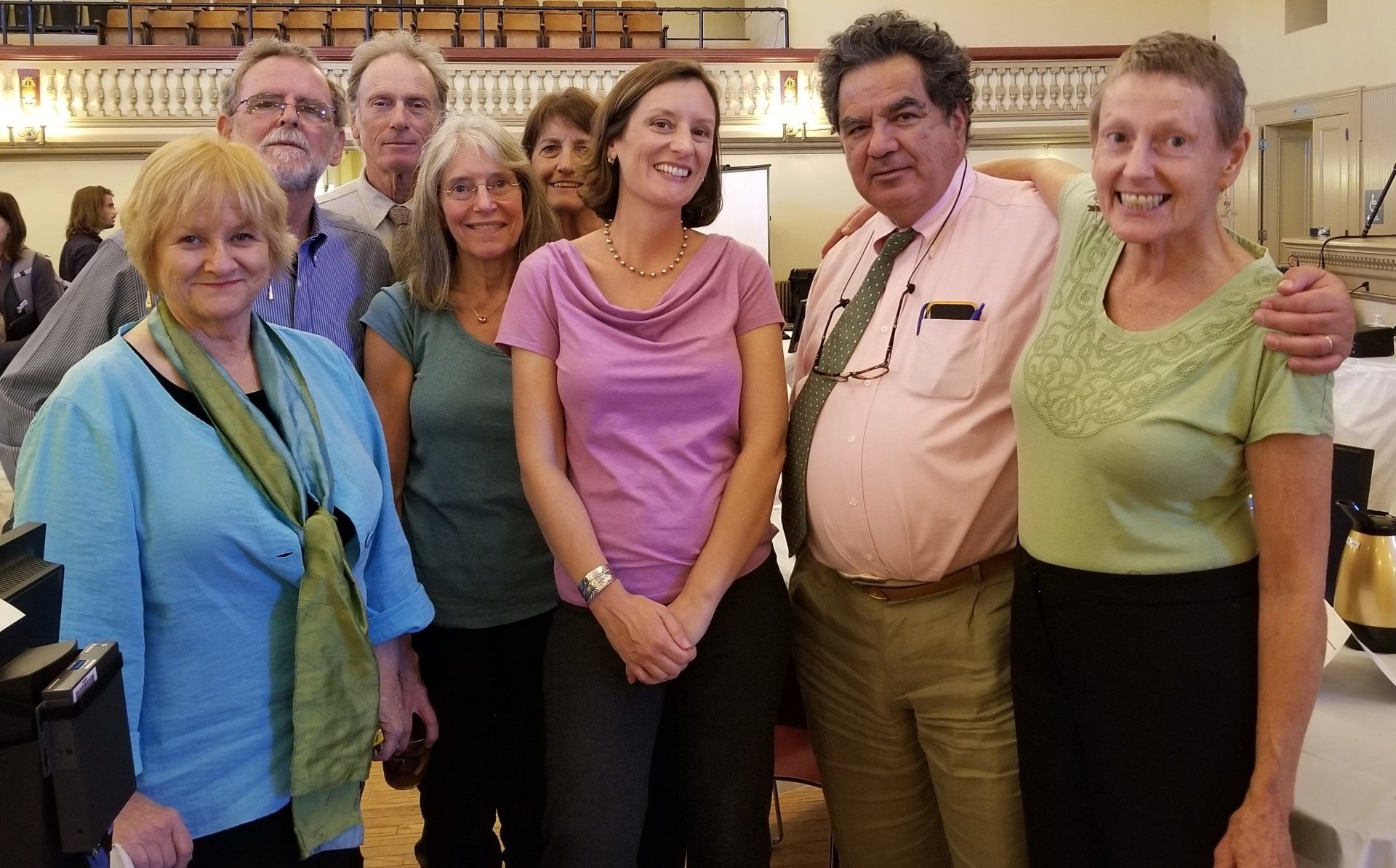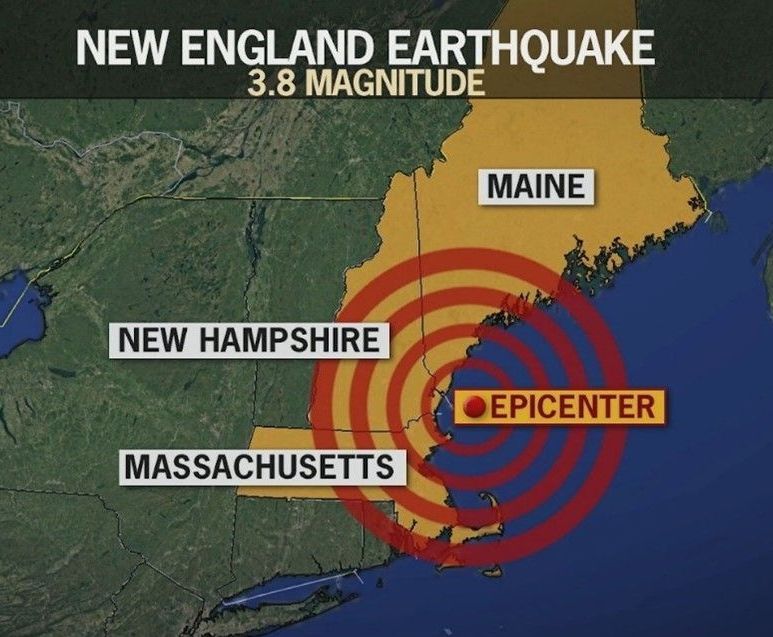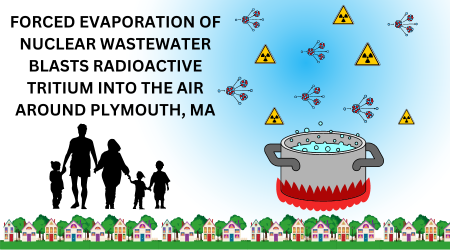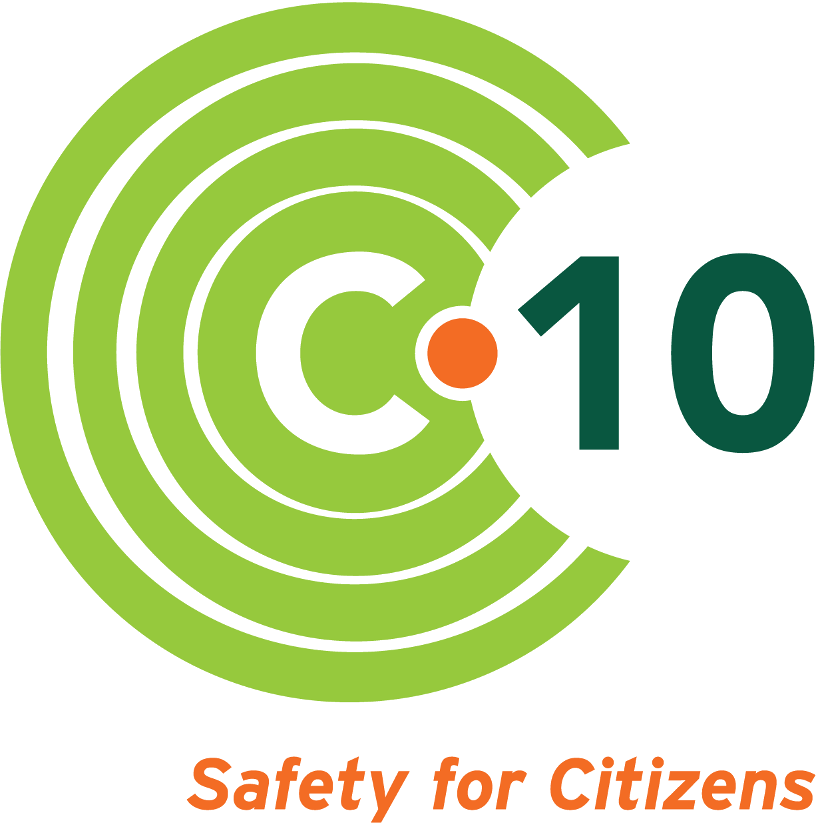C-10's Efforts Lead to More Testing for Seabrook’s Concrete
While a win for public safety, the order still needs improvements

The US Nuclear Regulatory Commission's Atomic Safety & Licensing Board (ASLB) has ruled in the case relative to Seabrook Station's degraded concrete. The decision comes nearly a year after the week-long hearing at Newburyport City Hall.
After years of following the issue with great concern, in 2017 C-10 challenged the representativeness of tests done at a lab in Texas as a basis for the plant's concrete aging management plan intended to prove the plant is safe.
The Board issued its Initial Decision late on Friday, August 21, in proprietary form A public version of the ruling
, which was nearly 200 pages, was issued on September 10.
C-10 has created a summary document called " Siding with Safety ," that describes the Board's ruling and highlights passages from the that demonstrate the severity of the issue and the seriousness with which the Board’s judges considered this case.
The ASLB’s ruling culminates a ten-year effort by C-10 to obtain effective government oversight of ASR, which has weakened important Seabrook safety structures like the reactor containment enclosure building and the spent fuel pool.
“NextEra Energy Seabrook has been sent back to the drawing board with this extremely detailed ruling,” said Natalie Hildt Treat, executive director of C-10. “While the Atomic Safety & Licensing Board ultimately accepted the company’s concrete testing program, it did so with several important conditions that will do more to ensure the health and safety of the public,” said Treat.
The order directs Seabrook Station to conduct much more frequent and detailed monitoring and engineering evaluations in a number of situations, in some cases increasing the frequency of testing from the proposed five to ten years, up to six-month intervals. It also orders NextEra to conduct a petrographic analysis on each core sample extracted from the plant’s concrete in order to detect internal microcracking and delamination. This technique was urged by C-10’s expert witness, Dr. Victor Saouma, who is one of the world’s leading authorities on the condition of alkali-silica reaction, or “ASR.”
Seabrook is the first U.S. reactor known to be suffering from ASR, though its presence has been a factor leading to the closure of at least two other reactors, globally. The licensing board is a three-judge panel under the U.S. Nuclear Regulatory Commission (NRC). C-10 has been following this problem for the last decade and has submitted previous filings urging the NRC to take the ASR phenomenon more seriously, and to develop federal regulations to govern its handling at nuclear reactors.
“I am extremely proud of what C-10 has accomplished with this case,” said Treat. “We have markedly moved the needle by ensuring that better science underpins Seabrook’s concrete aging management plan. C-10’s work and the body of knowledge we have brought to light will no doubt influence how future ASR policy is made in this country,” said Treat.
“Let’s hope that NextEra does the right thing for its neighbors and begins taking steps to strengthen Seabrook’s concrete aging management plan right away, rather than wasting time and resources to fight what was ordered in this carefully-deliberated ruling,” said Treat. “They won on the point that their License Amendment Request was upheld. C-10 and public safety won in that more frequent and more revealing testing and monitoring of the plant's concrete were ordered by the Board.”
Though C-10 is generally pleased with the careful deliberations of the ASLB, we believe that the order could and should be more clear in terms of the conditions placed on NextEra. More specific and measurable guidance on how the plant operator should monitor the progression of ASR will enhance public safety. As the conditions are written, we still have concerns.
To that end, on August 31, C-10 filed a motion to reopen the record and ask the judges for partial reconsideration of their ruling on Seabrook's concrete. This effort was made to provide supplemental testimony from our expert, Dr. Victor Saouma, in order to ensure that what he believes were the objectives of the judges in placing these conditions on the plant operator are in fact met.
Dr. Saouma took the four license conditions placed by the ASLB and proposed specific language for making them stronger.
These suggestions include:
- Improvements to how NextEra monitors the expansion behavior of the concrete cracks;
- A recommendation that properly tuned acoustic sensors be used at a six-month internal to monitor the integrity of reinforced steel in the concrete;
- The need for clearer criteria on what would trigger an engineering evaluation on the continued suitability of six-month monitoring intervals for areas experiencing the highest severity of cracking; and,
- Specifying the size of the microcracks that should be visible using petrographic
methods, and offering further guidance on how the petrographic analysis should be conducted.
If the ASLB ultimately admits Dr. Saouma's testimony (not yet available in public form) and revises their final order to incorporate his suggestions, this will give C-10 a much higher level of confidence that Seabrook Station is following best practices to monitor and manage ASR, thus enhancing public safety.
With this final submission, Dr. Saouma and C-10 are seeking to strengthen and clarify the conditions that the ASLB placed on NextEra in order to enhance public safety. While it is not surprising that the licensee objects to the guidance of an independent expert on how it should conduct its concrete aging management program, it is disappointing, though par for the course, that NRC's staff sided so strongly against the advice of a pro bono scientist whose only goal is to protect the people who live near this degraded atomic power plant. We will post updates and public documents as they are made available.
BACKGROUND INFORMATION
About ASR and C-10’s contentions: In October 2017, the U.S. Nuclear Regulatory Commission’s Atomic Safety and Licensing Board admitted five of C-10’s contentions in a proceeding on NextEra’s License Amendment Request relative to the plant’s concrete troubles, a condition known as alkali-silica reaction (ASR). The Board admitted C-10 as a legal intervenor in the case and reformulated five accepted contentions into a single contention:
The large-scale test program, undertaken for NextEra at the FSEL, has yielded data that are not “representative” of the progression of ASR at Seabrook. As a result, the proposed monitoring, acceptance criteria, and inspection intervals are not adequate.
First detected at Seabrook in 2009, the presence of alkali-silica reaction (ASR) caused NextEra Energy Seabrook to submit a license amendment request in which the company sought NRC approval of a concrete aging management plan. The same plan was included in Seabrook’s license renewal application. The NRC initially determined that the plan was sufficient, and in March 2019, granted the LAR and a 20-year license extension to operate the reactor until 2050. These actions were taken in spite of a planned ASLB hearing on Seabrook’s concrete problems that took place the week of September 23, 2019 in Newburyport, Mass. NRC staff have subsequently said that the licensing board’s ruling could compel the agency to revisit the issue.
At that hearing, C-10 attorney Diane Curran told the licensing board that “The biggest concern posed by ASR at Seabrook is this: if severe enough, ASR may weaken concrete safety structures to the point that they crack during an earthquake and release radiation into the environment.”
“The discovery of ASR at Seabrook has presented NextEra and the NRC Staff with three unique and difficult problems,” wrote C-10 in its Proposed Findings of Facts and Conclusions of Law, filed with the NRC in November, 2019:
- First, ASR is an exceptionally perverse phenomenon, rotting concrete from within. The webs of ASR-caused microcracks and delaminations inside a concrete structure can weaken a large building to the point it is unable to withstand even a moderate earthquake.
- Second, the insidious effects of ASR are invisible to the naked eye and difficult to diagnose. Webs of ASR-caused microcracks and larger delaminations lie beneath the surface, and may not be indicated by surface cracking. And these nefarious effects are not uniform within a concrete structure; instead, ASR is heterogeneous and dependent on such localized conditions as aggregate and sand geochemistry, temperature, and humidity.
- Third, while ASR has for decades been known to exist in numerous structures such as dams and bridges, and while ASR is the subject of a significant body of international research, it is not regulated by the NRC.
The crux of C-10’s contention is that NextEra relied on concrete testing done at a lab at the University of Texas, Austin that was a poor stand-in for the actual concrete that has faced decades of exposure on the New Hampshire salt marsh. In particular, the different mineral components of the test samples are not representative of the particular chemical make-up of Seabrook’s concrete, and thus will not behave in the same manner.
C-10’s Expert and Counsel: Victor Saouma , Professor of civil and structural engineering at the University of Colorado, Boulder, is C-10's expert witness in the case regarding Seabrook's concrete. Saouma's work centers on what he sees as flawed test results that affected the safety analysis underpinning NextEra Energy Seabrook's concrete aging management plans. One of the world’s leading experts on alkali-silica reaction (ASR), Saouma has studied its effects on nuclear reactors—in particular, how the containment structures could be weakened should an anticipated earthquake occur. Saouma has worked for decades on concrete structure and material properties, and has many peer-reviewed technical articles on topics regarding concrete degradation. Saouma has researched ASR at nuclear power plants under contract with the U.S. Nuclear Regulatory Commission. Read his consolidated findings in the Seabrook case, here. C-10 is represented by Diane Curran , a nationally-known environmental and nuclear safety attorney.
More on C-10’s legal challenge relative to Seabrook’s concrete is here , including an updated timeline.
Follow us



